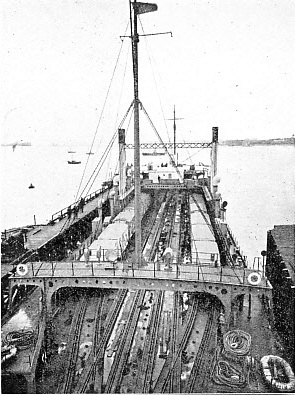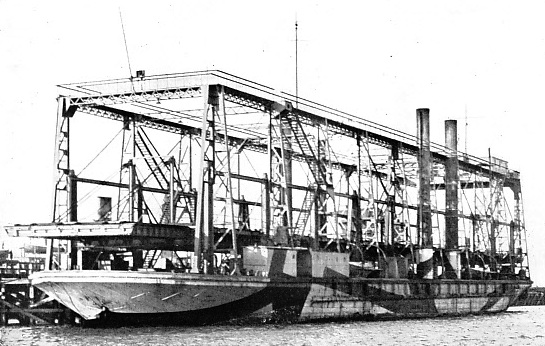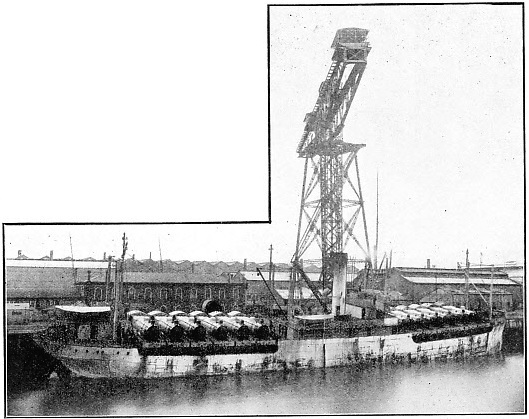
© Railway Wonders of the World 2012-


Trains That Go To Sea
 IN various parts of the world there are wide waterways that interrupt the course of the railways, and in a number of such cases the water has been bridged by taking the trains them-
IN various parts of the world there are wide waterways that interrupt the course of the railways, and in a number of such cases the water has been bridged by taking the trains them-
TRAIN-
Harwich to Zeebrugge service.
Needless to say, the connection between the ferry-
During the war tons and tons of munitions for our armies in France were loaded into wagons and run by train to Richborough, on the Kent Coast, taken over on the same wagons to Dunkirk, and run there straight on to the French railways. Had it not been for the ferry all the munitions would have needed to be transferred from train to steamer on one side, and from steamer back to train on the other -

A FLOATING RAILWAY. This is one of those wonderful ferry boats which, during the war, carried whole trains between England and France. The floor, which appears as if it were suspended above the hull of the boat, carried rails onto which the railway vehicles are run. It is made to rise and fall, so that whatever may be the height of the tide it can be brought level with the quay.
The first regular train ferry in the country is now being worked by the London and North Eastern Railway from Harwich, in Essex, to the famous port of Zeebrugge, in Belgium, and a stream of merchandise is being carried in both directions in through wagons. Recently, for example, a large consignment of fish was worked through by this route in record time from the East Coast ports right down to Northern Italy, where it was eagerly bought up.
As yet we have no passenger train-
Locomotives do not usually travel with their trains on these ferries; but on the Oakland ferry of the Southern Pacific Railroad of America, out of San Francisco -
The other picture in this chapter shows a rather different kind of sea-

You can read more on “Out to Sea by Train”, “A Railway Which Goes to Sea” and “Train Ferries” on this website.
You can read more on “Floating Railways”, the Southern’s “Twickenham Ferry” and on the LNER’s “Train Ferry No. 3” in Shipping Wonders of the World
NEW ENGINES FOR INDIA ON BOARD SHIP